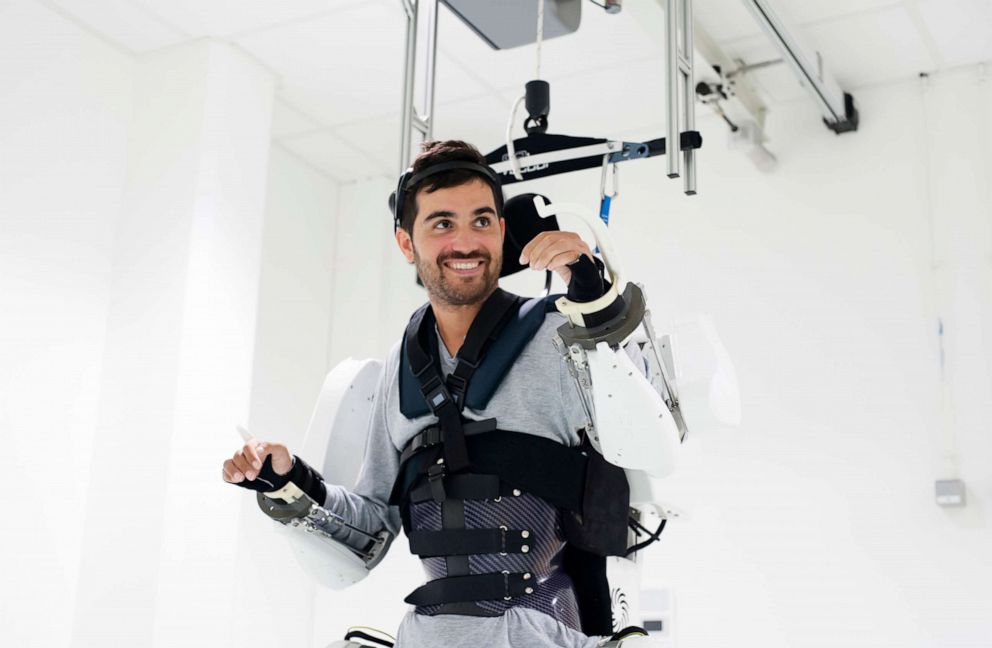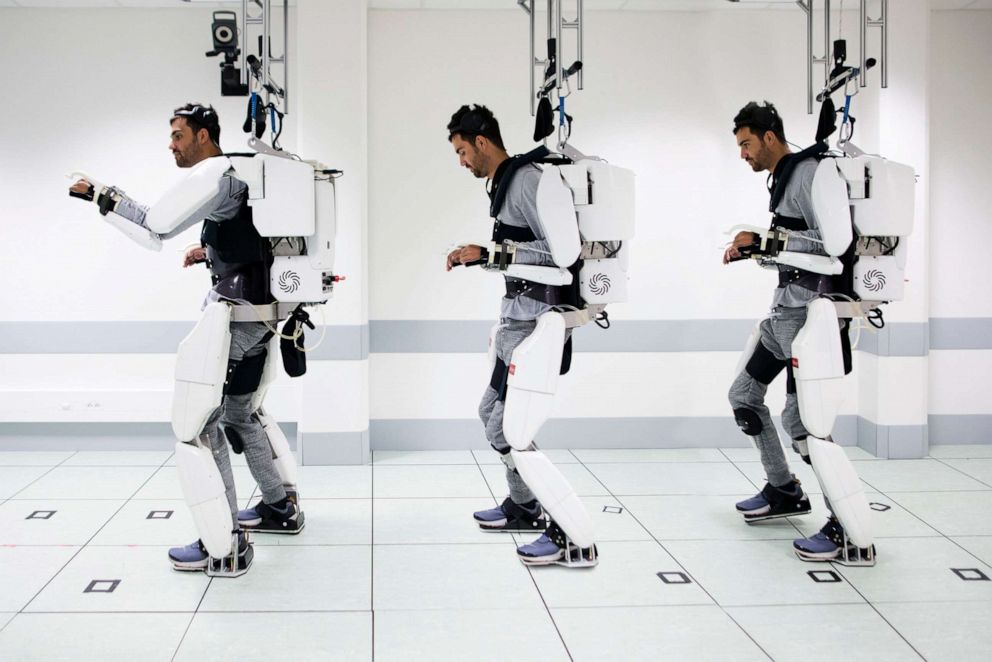Quadriplegic man walks with an exoskeleton he controls with his brain
Researchers in France shared their findings this week in a new study.
A quadriplegic man was able to move his arms and walk using an exoskeleton controlled by signals sent from his brain and a harness suspended from the ceiling, French researchers said in a new study.
The research centered on a 28-year-old man who was paralyzed from the shoulders down, and his first steps and arm movements were the culmination of a two-year project that was published in The Lancet Neurology journal on Thursday.
An exoskeleton allowed him to move all four of his paralyzed limbs by recording and then decoding his brain signals.

"Ours' is the first semi-invasive wireless brain-computer system designed for long term use to activate all four limbs," Alim-Louis Benabid, the executive board president of the biomedical research center Clinatec and a professor emeritus at the University of Grenoble in France, said in a statement announcing the findings.
"Previous brain-computer studies have used more invasive recording devices implanted beneath the outermost membrane of the brain, where they eventually stop working," he added. "They have also been connected to wires, limited to creating movement in just one limb, or have focused on restoring movement to patients' own muscles."

The mind-controlled exoskeleton works by implanting recording devices into the patient and collecting brain signals. These signals were then sent through a decoding algorithm that translated the signals into the movements. From there, it sent the movement commands to the exoskeleton to carry them out.
Over the two years of the study, the patient trained the device to understand an increasing number of his thoughts, thus increasing the number of movement commands it could pick up simply from his brain signals.

"Our findings could move us a step closer to helping tetraplegic patients to drive computers using brain signals alone, perhaps starting with driving wheelchairs using brain activity instead of joysticks and progressing to developing an exoskeleton for increased mobility," Stephan Chabardes, neurosurgeon from the Centre Hospitalier Universitaire de Grenoble of Grenoble-Alpes, France, added in a statement.

While researchers warned that the device is still a long way from becoming widely available, the early findings offered hope that it could have the potential to improve paralyzed patients' quality of life and independence.
Researchers say their next step is to figure out how to let the patient walk without requiring the harness.


